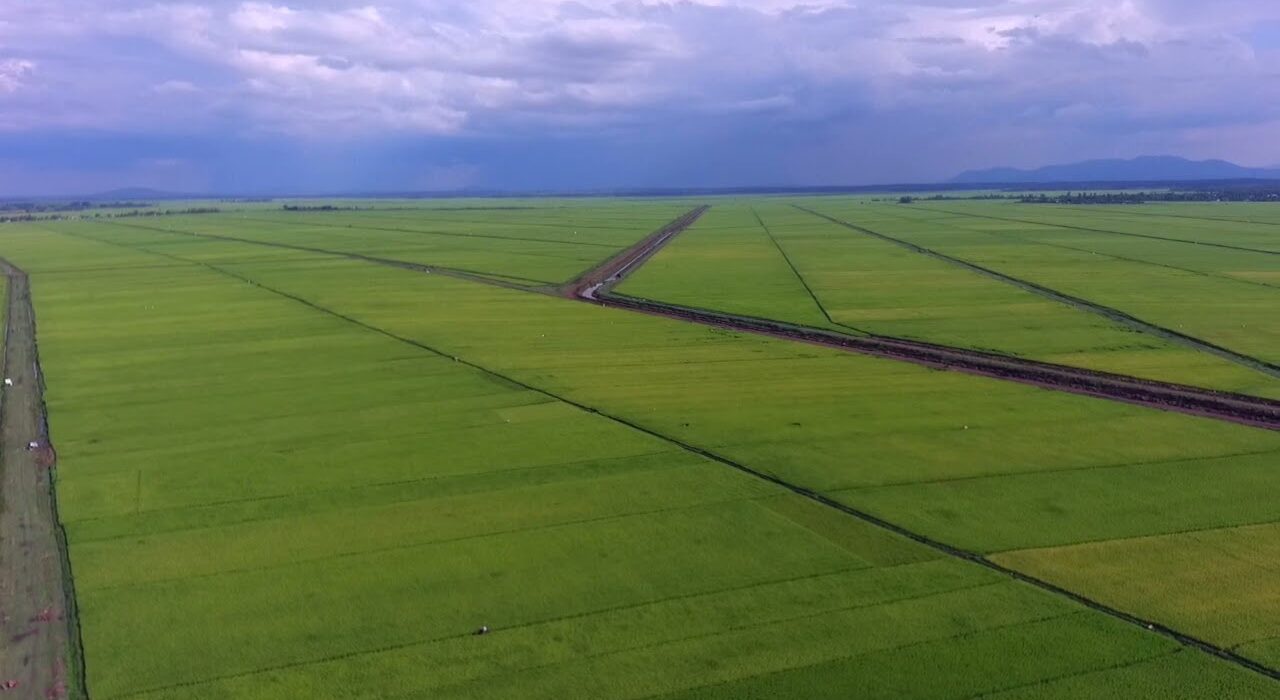Irrigation has become a lifeline for food security in Kenya, especially with increasingly erratic rainfall patterns impacting agriculture. The Kenyan government, through the National Irrigation Authority (NIA), has invested significantly in developing irrigation schemes to improve agricultural output, promote food security, and alleviate poverty. This article provides a comprehensive list of Kenya’s national irrigation schemes, detailing their sizes, locations, and the crops they support.
National Irrigation Schemes in Kenya
1. Mwea Irrigation Scheme
Mwea is Kenya’s largest rice irrigation scheme, covering approximately 30,050 acres in Kirinyaga County. Established in 1954, the scheme engages around 7,022 farmers, who predominantly grow rice. Water for the scheme comes from the Nyamindi and Thiba rivers, conveyed through open channels and earthen canals and distributed via flood irrigation. Mwea has been pivotal in ensuring rice supply in Kenya, producing about 80% of the country’s rice.
2. Bura Irrigation Scheme
Located in Tana River County, Bura spans 12,000 acres and supports approximately 2,245 farmers. Established in 1978, the scheme’s primary crop is maize. Water is pumped from the Tana River, utilizing diesel generators and pumps—a costly but necessary method given the area’s arid climate.
3. Tana Irrigation Scheme
The oldest scheme in Kenya, Tana Irrigation Scheme was established in 1953 in Tana River County and covers 12,000 acres. The scheme, involving 1,050 farmers, focuses on maize and cotton production, though farmers also cultivate various horticultural crops. Water from the Tana River is distributed through open earth canals and applied via furrow irrigation, making it a versatile scheme that caters to a variety of crops.
4. Perkerra Irrigation Scheme
Started in 1954, Perkerra is located near Marigat Town in Baringo County. The scheme spans 5,800 acres and involves 1,625 farmers. While maize is the main crop, farmers also grow watermelons, onions, and vegetables on a smaller scale. The Perkerra River supplies water, distributed by gravity through open earth channels.
5. Ahero Irrigation Scheme
Ahero is situated in the Kano Plains, Kisumu County, between the Nandi Escarpment and Nyabondo Plateau. Covering 4,176 acres, the scheme was established in 1966 and supports 2,000 farmers. The main crop is rice, but farmers also grow soybeans, maize, watermelon, tomatoes, sorghum, and cowpeas. Water sourced from the Nyando River is applied through basin irrigation.
6. Bunyala Irrigation Scheme
Located in Busia County, Bunyala covers 1,880 acres and was launched in 1959. It primarily supports rice cultivation, with about 1,394 farmers involved. Water from the Nzoia River is pumped and distributed via gravity flow through open earth channels, making it effective for rice cultivation using basin irrigation.
7. West Kano Irrigation Scheme
Also located in the Kano Plains in Kisumu County, this scheme lies between the Nandi Escarpment and Nyabondo Plateau near Lake Victoria. Established in 1974, West Kano spans 4,450 acres and serves 836 farmers. Rice is the predominant crop, with water pumped from Lake Victoria.
Irrigation Development Challenges in Kenya
Despite these established irrigation schemes, Kenya has only tapped into about 13.5% of its irrigation potential, estimated at 1.342 million hectares. The current irrigated area of approximately 180,503 hectares is limited by several challenges, including:
- Inadequate Investment: Funding for irrigation projects has historically been low, constraining expansion and modernization efforts.
- Poor Management Systems: Operational inefficiencies hinder the productivity of irrigation schemes, often leading to water wastage or shortages during critical planting seasons.
- Lack of Policy Support: An overarching, cohesive irrigation policy is lacking, affecting how schemes are managed and expanded to meet the country’s food production goals.
- Insufficient Support Services: A shortage of irrigation extension services and marketing infrastructure limits farmers’ access to technical knowledge and market linkages, reducing the profitability of irrigated crops.
The Future of Irrigation in Kenya
To fully realize Kenya’s irrigation potential, the government, along with the National Irrigation Authority (NIA), has committed to expanding existing schemes and developing new ones. There is a growing focus on adopting sustainable and cost-effective technologies, like solar-powered irrigation pumps, and improving water storage infrastructure to reduce dependence on seasonal river flows.
Contact the National Irrigation Authority (NIA)
For further information, assistance, or inquiries regarding Kenya’s irrigation schemes, the NIA is reachable as follows:
- Head Office: Irrigation House, Lenana Road, Nairobi
- Contact: +254 711 061 000
- Email: ceo@irrigation.go.ke
The strategic development and expansion of Kenya’s irrigation schemes are essential for bolstering agricultural productivity and food security. With more investment and improved management, irrigation holds immense potential to transform Kenya’s agricultural landscape and empower rural farming communities.





